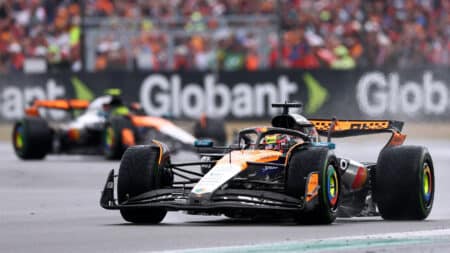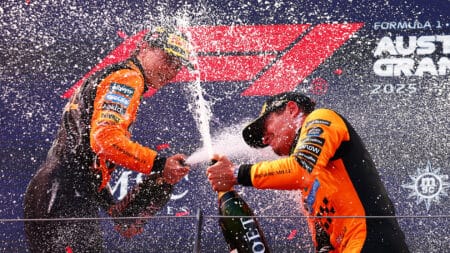
Horner's departure shows age of the maverick F1 boss is over
Christian Horner has now left Red Bull, the last of a certain breed of F1 team principal
The supercar that had to be powered down to compete

Groundbreaking. It’s a word bandied around far too much in motoring, but if there’s one car that the word should be spared for, this is it.
It was an exercise in engineering brilliance from one of the sport’s greatest minds in Gordon Murray. By far the fastest production car when it was built, it is a remarkable feat that a car built in the ’90s still has the highest top speed of any naturally aspirated production car today.
When the first F1s rolled off the production line in 1992, following four consecutive drivers’ F1 titles for McLaren, they were priced at a modest $815,000. That’s around $1.4 million in today’s money, a bargain for a machine regarded by many as the finest automotive achievement of all time. But that six-figure sum looks even better value when you consider the price one sold for at Bonhams’ Monterey auction.
There’s no easy way to play it in…
That made it the most expensive F1 ever sold and the priciest British car ever sold at auction. For one day. An Aston Martin DBR1 quickly put paid to that, such is the relentless pace in Monterey.
But it’s in racing circles that the F1 impresses most. McLaren never intended to make a racing car when it designed the F1 road car, but when the GTR first rolled onto the grid in 1995 – and won – it became perhaps the only race car in the world to have less power than its road-going counterpart. With horsepower pegged back to comply with Le Mans regulations, the GTR won its first six races in the BPR GT Series – a championship it never failed to win – and then arrived at the big one: Le Mans.
The story behind the F1’s record-breaking 240.14 mph top speed run
Only nine GTRs were built in 1995 – three times more than planned – but six of them lined up for the twice round the clock at La Sarthe. While the lighter prototypes were expected to be faster, wet conditions and drivers of the calibre of JJ Lehto, Derek Bell and Andy Wallace made the F1 a formidable underdog.
In the rain of the night, Lehto was a class apart. The Finn lapped 10 seconds faster than any other car on track at one point, an extraordinary performance that he described to Andrew Frankel over lunch earlier this year. His black GTR won comfortably by a lap with three more GTRs completing the top five. Two more podiums were to follow for the F1 in coming years.
Like the road car, the GTR had swept the floor. Yes, in McLaren’s own words its carbon-fibre tub, light weight and 6.1-litre V12 had made the road-going car ‘a modern Can-Am for the road’, but rarely has a road car in its first year of production arrived at the world’s biggest race with so few modifications and won.
It’s a car with quite a legacy, one that Monterey suggests is only getting greater.

Christian Horner has now left Red Bull, the last of a certain breed of F1 team principal

Was Oscar Piastri the real winner in the long run after Silverstone? asks James Elson

Lewis Hamilton hadn't won in almost three years – and then produced a sensational victory at Silverstone 2024. James Elson explains why it was his best ever

Describing this year's championship race as a 'battle' might be slightly over-egging it, writes James Elson